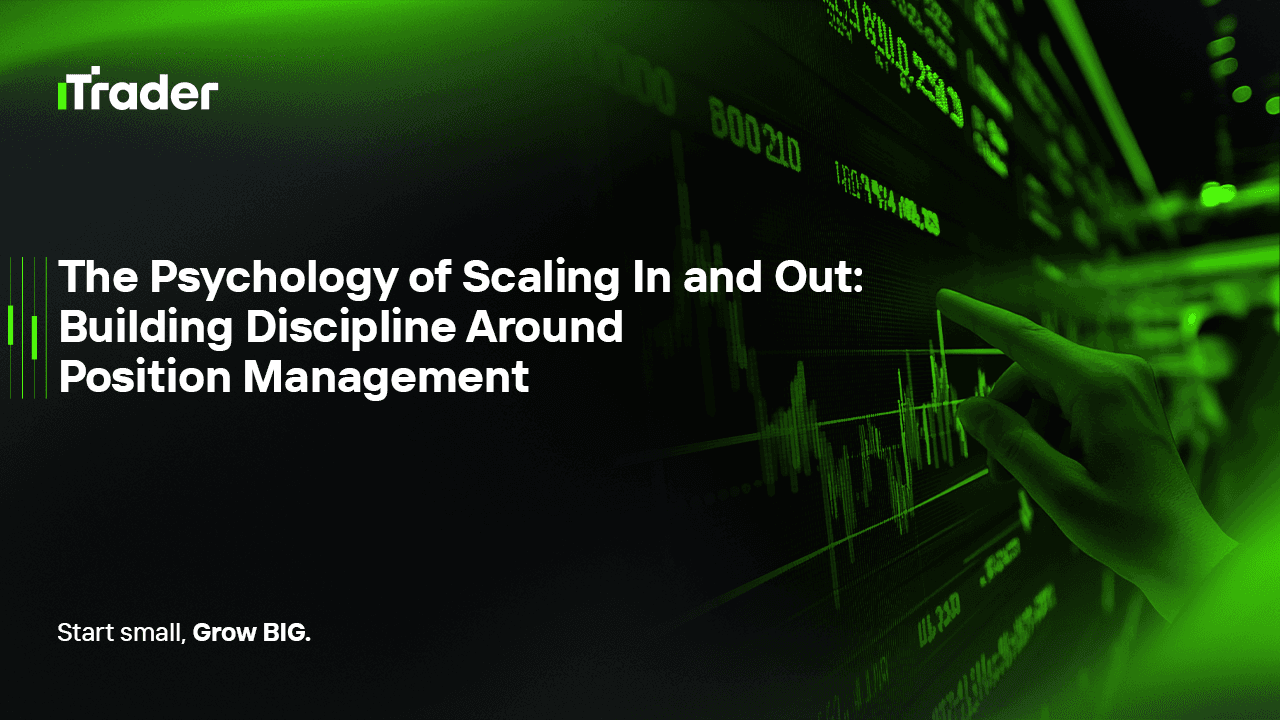2025-09-23
Ask any trader what matters most, and many will say “finding the perfect entry.” But if you’ve been trading forex long enough, you know the truth: the entry is only the beginning. The real battle starts after you’re in the trade.
This is where position management comes in. It’s the art—and discipline—of adjusting your exposure as the trade unfolds. Do you add more when the market is moving in your favor? Do you reduce size to protect profits? Or do you freeze, second-guess, and end up turning a good trade into a missed opportunity?

The answers lie in how well you apply two powerful techniques: scaling in and scaling out. Done right, they can transform your equity curve. Done wrong, they can sabotage even the best setups.
Let’s break them down, not just technically, but from the psychological perspective that often separates winning traders from inconsistent ones.
At its core, position management is about controlling your size, risk, and profit distribution as the market evolves.
Sounds simple, right? The reality is far from it. The mechanics are easy—the psychology is not. That’s why so many traders either misuse these tools or avoid them altogether.
Scaling in is about pressing your advantage. Instead of throwing all your capital in at once, you start small, and only increase size when the trade proves itself.
For example:
Greed creeps in fast here. Many traders confuse scaling in with averaging down—adding to losers in the hope of recovery. That’s not scaling in; that’s gambling. True scaling in happens only when you’re already ahead.
Another common pitfall: over-adding. A trade moves slightly in your favor and you pile in aggressively, only to get shaken out by a minor pullback. Discipline is what keeps scaling in a weapon, not a liability.
Scaling out is about reducing exposure as the trade matures. Instead of closing everything too early or holding everything too long, you strike a balance.
Example:
The danger with scaling out is doing it too early. If you close half the position for peanuts, you rob yourself of the trade’s true potential. On the flip side, refusing to scale out at all can mean watching a winning trade reverse and wipe out your gains.
The skill lies in defining clear rules: when, how much, and under what conditions to scale out. Without that framework, emotions take over.
The technical rules are easy to write down. The execution is another story.
Here’s what tends to go wrong:
To counter this, you need structure:
A trader buys EUR/USD with 1 lot, stop 50 pips. After +50 pips in profit, they add 0.5 lot. At +100 pips, they close the initial 1 lot, trail the remaining 0.5 lot, and secure a total of +3R.
The key? They only added after confirmation and managed risk carefully.
Another trader buys 1 lot. The trade drops 40 pips against them. Instead of taking the stop, they add another 1 lot to “average down.” When the stop hits, the loss is double what they planned.
That’s not position management—it’s emotional trading disguised as strategy.
Here’s how to bring discipline to scaling in and out:
Trading is a probability game. A single trade means nothing. What matters is how your equity curve looks after 100, 200, or 500 trades.
Scaling in and out, applied with discipline, smooths that equity curve. It reduces volatility in your results, protects you from emotional swings, and lets you compound gains more effectively.
The traders who succeed aren’t the ones who catch one big move—they’re the ones who stay in the game long enough for their edge to play out. Position management is what keeps you in the game.
Scaling in and scaling out are more than just trade management tactics. They are mirrors that reveal your psychology.
With clear rules and discipline, these tools transform you from reacting emotionally to trading with intent. They don’t just help you manage positions—they help you manage yourself.
That’s the real edge.
© 2025 iTrader Global Limited | 회사 등록번호: 15962
iTrader Global Limited는 코모로 연방 앙주앙 자치섬의 무잠두(Hamchako, Mutsamudu)에 위치하고 있으며, 코모로 증권위원회(Securities Commission of the Comoros)의 인가 및 규제를 받고 있습니다. 당사의 라이선스 번호는 L15962/ITGL입니다.
iTrader Global Limited는 “iTrader”라는 상호로 운영되며, 외환 거래 활동에 대한 인가를 받았습니다. 회사의 로고, 상표 및 웹사이트는 iTrader Global Limited의 독점 재산입니다.
iTrader Global Limited의 다른 자회사로는 iTrader Global Pty Ltd가 있으며, 이 회사는 호주 회사 등록번호(ACN): 686 857 198을 보유하고 있습니다. 해당 회사는 Opheleo Holdings Pty Ltd의 공식 대리인(AFS 대표 번호: 001315037)이며, Opheleo Holdings Pty Ltd는 호주 금융서비스 라이선스(AFSL 번호: 000224485)를 보유하고 있습니다. 등록 주소는 Level 1, 256 Rundle St, Adelaide, SA 5000입니다.
면책 조항: 이 회사는 본 웹사이트에서 거래되는 금융 상품의 발행인이 아니며 이에 대해 책임을 지지 않습니다.
위험 고지: 차액결제거래(CFD)는 레버리지로 인해 자본 손실이 빠르게 발생할 수 있는 높은 위험을 수반하며, 모든 사용자에게 적합하지 않을 수 있습니다.
펀드, CFD 및 기타 고레버리지 상품의 거래에는 전문적인 지식이 요구됩니다.
연구 결과에 따르면 레버리지 거래자의 84.01%가 손실을 경험하고 있습니다. 거래에 참여하기 전에 관련 위험을 충분히 이해하고 전체 자본을 잃을 준비가 되어 있는지 확인하십시오.
iTrader는 레버리지 거래로 인해 발생하는 손실, 위험 또는 기타 피해에 대해 개인 또는 법인에게 전적인 책임을 지지 않음을 명시합니다.
이용 제한: iTrader는 해당 활동이 법률, 규제 또는 정책에 따라 금지된 국가의 거주자를 대상으로 본 웹사이트나 서비스를 제공하지 않습니다.